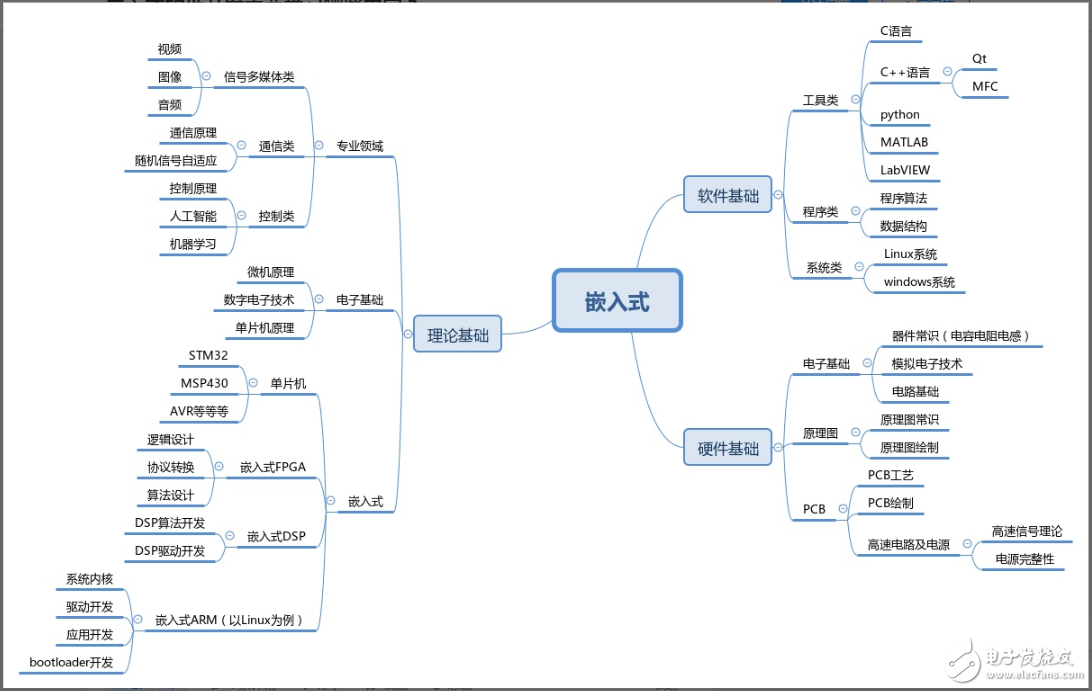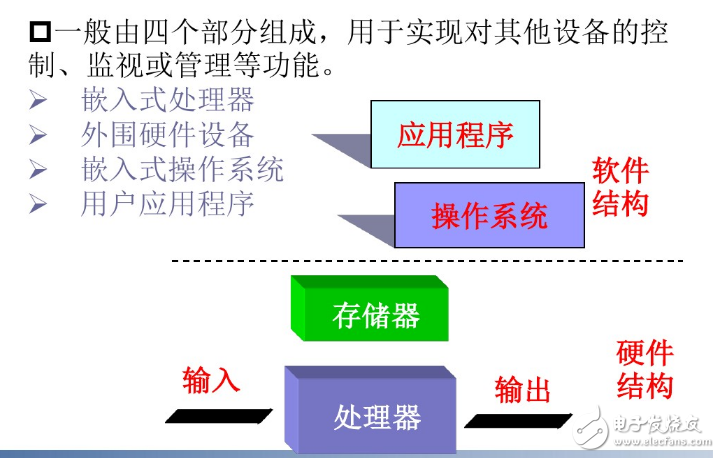An embedded system is a "special computer system that is completely embedded within a controlled device and designed for a specific application." According to the British Institute of Electrical Engineers, an embedded system is a control, monitoring or auxiliary device, machine, or factory operation. device of. Unlike general-purpose computer systems such as personal computers, embedded systems typically perform predefined tasks with specific requirements. Because the embedded system is only for a specific task, the designer can optimize it to reduce size and cost. Embedded systems are typically mass-produced, so individual cost savings can be scaled up with yields. Embedded systems are systems used to control or monitor large-scale equipment such as machines, devices, and factories. The embedded system generally recognized in China is defined as: application-centered, computer-based, software and hardware tailored to meet the strict requirements of the application system for functions, reliability, cost, size, power consumption and other special computer systems. Typically, an embedded system is an embedded processor control board in which the control program is stored in ROM. In fact, all devices with digital interfaces, such as watches, microwave ovens, video recorders, and automobiles, use embedded systems. Some embedded systems also include an operating system, but most embedded systems implement full control from a single program. logic. The core of an embedded system consists of one or several microprocessors or microcontrollers that are pre-programmed to perform a few tasks. Unlike general-purpose computers that are capable of running user-selected software, software on embedded systems is often temporarily unchanged; so it is often referred to as "firmware." Embedded system architecture The development of an embedded system (the embedded system including ARM, DSP, MCU, etc., excluding FPGA, CPLD, etc.) refers to at least two parts of hardware and software. Hardware digital circuit First of all, the hardware part, an embedded circuit board, most of the digital circuits, processing digital signals, so there must be the basis of digital circuits, and circuit theory is the basis of digital circuits, so circuit theory and digital circuits It has become the basis for learning embedded, and it is also a necessary technology for future development. But the circuit and the digital circuit are very simple, you don't need to study it deliberately, and you don't need to go deeper. Just need to know the high and low levels. There is almost no design about this part of the hardware. For example, the peripheral circuit of the CPU, the crystal oscillator, the reset, the extended eeprom, etc., do not need to be designed by us. It can be connected directly according to the typical application in the chip manual. . But if you want these chips to work, developers need to read the user manual, focusing on the flow chart and timing diagram of the operating chip. Read about the datasheet, which I will cover in detail in the next section. Hardware analog circuit With the foundation of digital circuits, you can design a microprocessor's minimum system and drive some simple peripherals to achieve basic functions, but these are still in the beginner stage, if you want to become a master, independently complete the hardware design, analog electronics Technology must be good. An embedded circuit board needs to collect external signals for filtering and amplification, which requires designing analog circuits. Analog circuits are inseparable from op amps, capacitors... tens of thousands of times more complex than digital circuits. But now you can buy it directly and assemble it. Manufacturers also offer typical applications: sensors, op amps, and AD units. However, this is not enough. More occasions need to be designed by yourself. With regard to this part of the content, the author has a limited level and cannot do more analysis. Software C language C language skills must be good, structures, pointers, etc. need to be skilled. Embedded is to use the C language to operate the hardware, the level of the C language determines the efficiency of the program. In any case, the C language must learn well. Assembly language is not recommended. Software algorithm The algorithm is the soul of the program, implemented in C language. Different functions are determined by algorithms. The most common are key scans, digital port displays, and more. It also includes the implementation of the timing diagram. These are not basic knowledge and require different algorithms for different situations. 700 Puffs,Electronic Cigarettes,Portable Vape Pen,NEW Disposable Vapes,Rechargeable Disposable Vape Shenzhen Xcool Vapor Technology Co.,Ltd , https://www.szxcoolvape.com



What is an embedded system? Introduction to the basics of embedded systems
What is an embedded system?